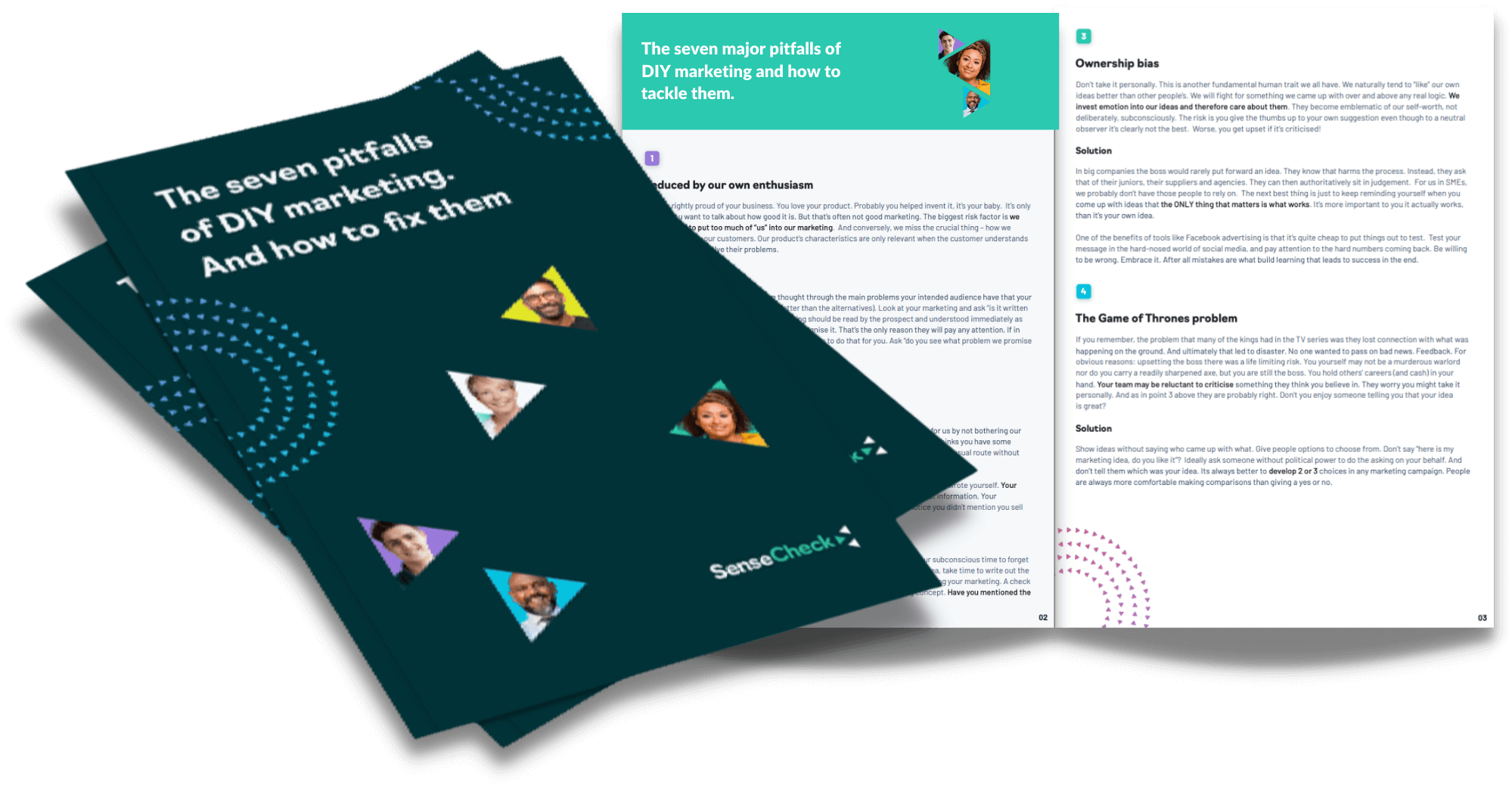
Your report contains the ratings and comments from 5 people from our professional panel. These 5 are likely to be a blend of professionals from consultancies or agencies* plus experienced owners, managers and marketers from other small B2B companies. They are asked to give you just their own personal perspectives. In effect, they are acting as a proxy for your target market.
They are asked to consider your marketing concept the way a prospect would (at first). Briefly. So take this report as being a “first impression from a new set of experienced eyes”. Obviously it’s not a strategic review of your business!
To read more about getting the most from your review see blog here
Your numeric rating scores
You are rated on 4 rating scales, on the key dimensions of success for any marketing activity
Eye catching – does it grab attention, have impact, capture my eyeballs?
Engaging – is it intriguing, interesting, arouse curiosity, immediately address an area of concern
Easy to understand – most prospects wont invest long reading your marketing, so keeping everything clear and simple, with high impact language is crucial
Says what its meant to – you explained what you were trying to achieve when you uploaded the idea. Your reviewers tell you if they feel this marketing will do that particular task.
You will see the ratings each individual gives and the average, plus whether this is better or worse than our test average. Take close look at the scores to see if your idea has a key weakness.
Each reviewer then is asked for a final assessment that if they were you would they run the idea as it is, with minor or major changes or to be honest, they wouldn’t.
Of course this is from 5 people so there is no statistical significance to an of the numbers. They are just a quick and simple guide to the gut feel of the reviewers. And a fast way to know if you have a problem or not.
The commentary
This is a crucial component of your report. As mentioned above this isn’t quantitative research, this is about guidance and getting a fast “sense check”. You are advised to read any and all comments very carefully. They are honest personal views given in the spirit of trying to help you. Even one new thought might give you an idea or help you spot a problem. But don’t just take the comment as gospel, consider it alongside everything else you know (that they don’t). Our key advice is to be open to criticism, because from that comes improvement, and better results. Also try to read between the lines. These are brief comments but they may open a box that is worthy of more thought.
As mentioned below many reviewers would be happy to expand on their thoughts and discuss them with you further.
Types of outcome
There are broadly 4 types of possible test outcomes
1. All reviewers agree the idea is good.
This is an easy one to action, but do still read the comments because there may yet be ways to improve. Or learnings to be had. In essence, however, be reassured you are good to go. There are no guarantees in life but if 5 objective professionals also give it the thumbs up, be confident.
2. All reviewers agree the idea is somewhat average
So, it’s a bit ho hum. Here play close attention to the comments. What do reviewers suggest you do to make this idea better? What problems do they draw your attention to? To be honest, we’d not recommend running an “average” idea. Budget is too precious and marketing too hard for an idea not to be at its best in order to succeed. But if you absolutely love it yourself, then that could make all the difference. Its not an exact science.
3. All reviewers agree the idea is poor.
OK this is an easy conclusion, but don’t throw the baby out with the bathwater. What do they say is wrong? Do they like some aspects of it? Maybe there is something to be rescued as the kernel of a better idea or execution. Above all be willing to take the feedback on the chin. Sensecheck reviewers are likely to be brutally honest. That’s what you want, right? And of course it’s not personal. You want your marketing to be successful and lets face it everyone has duds from time to time. The important thing is you caught it in time. Of course you can still disagree with your panel and run the idea. You may know things they don’t. It’s your marketing after all.
4. The panel is split.
Now this is a tricky one. Its very possible some people like the idea, others dislike it. It’s polarizing.
As with the other types, read the comments from both types of reviewer carefully. Its possible each has focused on slightly different issues. This can happen if you didn’t give a clear brief as to what you wanted feedback about. But its likely they genuinely have different opinions. Marketing isn’t an exact science and every reviewer has a different set of experiences to bring to bear. Certainly don’t just be happy for the positive reviews and ignore the negatives (very tempting). Particularly if there are two or more. It’s likely there is room for improvement that could win the approval of these doubters even if another two reviewers were raving fans. But a polarising review does put more onus on you to add in your own judgement as the tie break.
* Opening a Dialogue with agency and consultancy reviewers
These members would be happy to have a longer conversation and their contact information is available for you to use, entirely at your discretion (you remain anonymous to them until you take the action). Sensecheck panelists are all verified, experienced professionals. We have many very smart and capable people in our community. They are not going to give you a hard sell, and will be willing to expand on their commentary if you ask. It’s a free add on so why not take advantage, what’s to lose?
